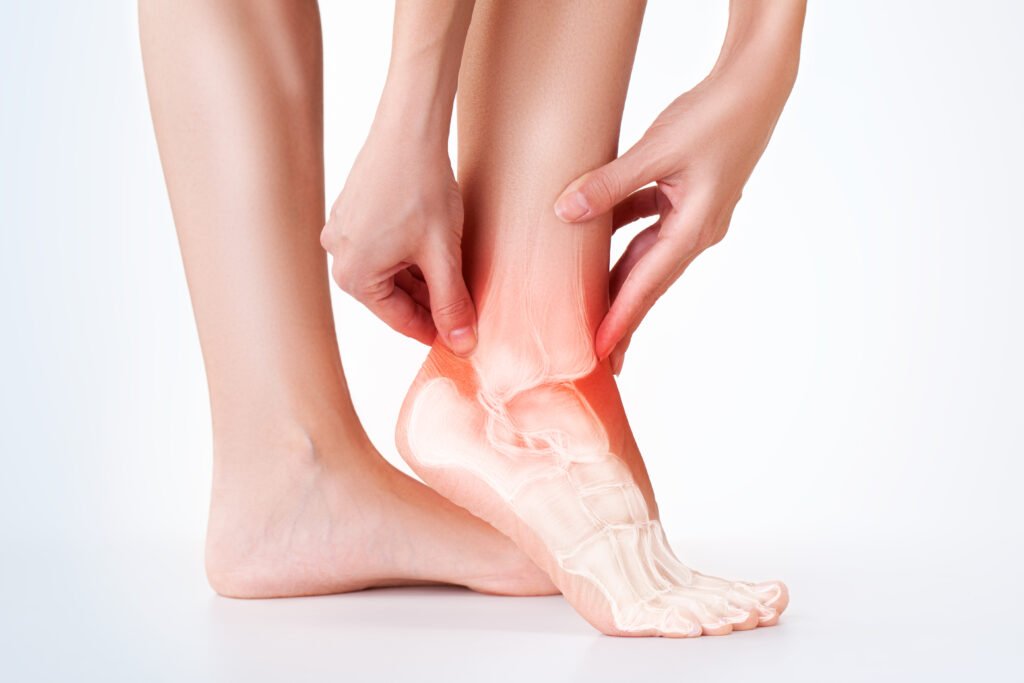Achilles Tendinitis
Pain on the Back of the Heel

Achilles tendinitis is an injury of the Achilles tendon – the large tendon that runs down the back of your leg. It presents as pain on the back of the heel which may extend up the back of the lower leg. The pain may be aggravated by activity such as running, jumping, stair climbing or squatting. Pain can be worse in the monrning and at the end of the day. You may also see a bump in the tendon where the tendinitis is located. This bump is often irritated by presssure from footwear.
The Achilles tendon is an essential structure that allows us to push on to our toes, run and jump. It runs from the back of the heel, then turns into the calf muscle which travels behind the knee.
Achilles tendinitis is a common injury for the “weekend warrior”. It is also common to people who are starting a new exercise program or activity and perform “too much, too soon.”
Risk Factors
- Age – This condition occurs mostly in middle age.
- Footwear – Worn out footwear, flats and high heels.
- Weight – Being overweight puts extra stress on the Achilles tendon.
- Foot Type – Flat feet and high arched feet. A flat foot (overpronation) causes extra sheer at the Achilles tendon insertion on the heel. High arched feet often have underlying muscle tightness which predisposes you to this condition.
Treatment
While there are several effective treatments for Achilles tendinitis, there is no “silver bullet” treatment. We suggest layering multiple treatments for best results. Achilles tendinitis is a slower healing condition, and can take several months.
- Rest – Rest is an essential step in recovery. You will need to decrease or stop activities that cause the pain. Activities such as running, walking (especially hills), stair climbing, jumping and squatting are particularly aggravating. Swimming and biking are good low impact alternatives. Many people are disappointed that they cannot participate in an activity they are passionate about during this time. Just remember that you will get back to that activity faster if you rest and heal now.
- Medications – Anti-inflammatory medication can help manage pain and inflammation.
- Low Level Laser Therapy – This treatment offered in-clinic helps reduce pain, inflammation and speed up healing.
- Shockwave Therapy – This treatment offered in-clinic works particularly well for chronic cases.
- Taping and Strapping – This helps support the Achilles tendon and limit range of motion in order to protect the healing tendon.
- Heel Lifts and Custom Orthotics – Custom orthotics support the foot which reduces stress to the Achilles tendon while it heals. Heel lifts can be used solo or incorporated into custom orthotics. They hold the Achilles tendon in a more relaxed position during recovery.
- Shoes – Structured running shoes with a slight pitch from heel to toe are best for Achilles tendinitis. It is also important to wear shoes indoors during treatment. Flats and non-supportive shoes should be avoided.
- Braces and Splints – An Achilles tendinitis night splint helps the tendon heal in an elongated position at night. There are also Achilles tendinitis braces that can be worn during the day to reduce stress to the tendon.
- Rehabilitation Exercises – There are several rehabilitation exercises to help you progress through the various phases of healing. These exercises can be prescribed from your chiropodist.
Prevention
To prevent recurrence, it is important to wear good quality shoes recommended by your chiropodist. Continue with basic calf stretching long term to keep the Achilles tendon elastic. It is also important to warm up before activity and to increase your activity gradually. If your foot mechanics are part of the problem, custom orthotics are recommended to reduce stress to the Achilles tendon.
